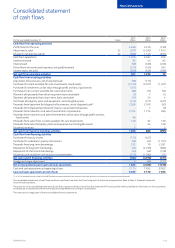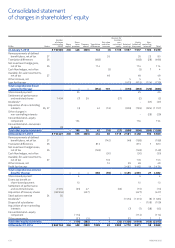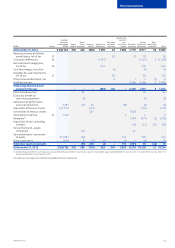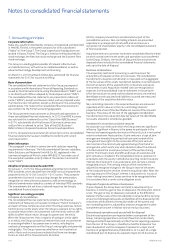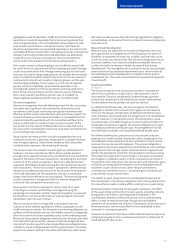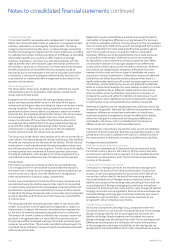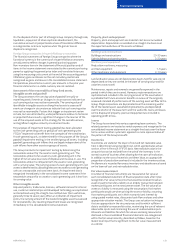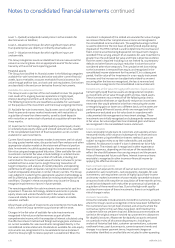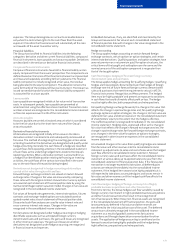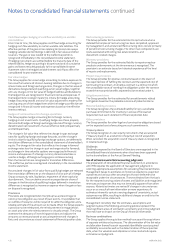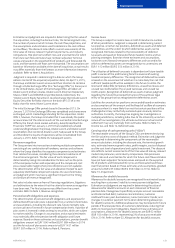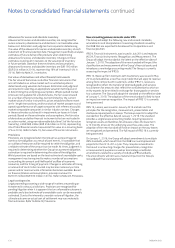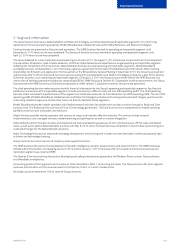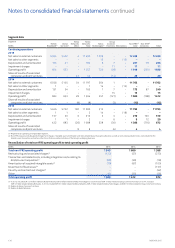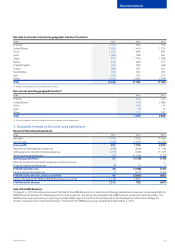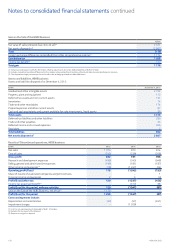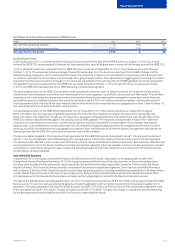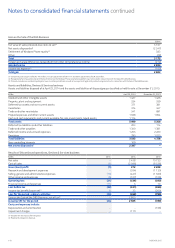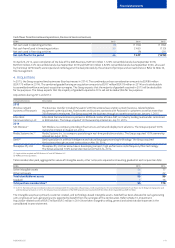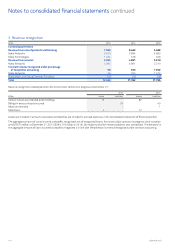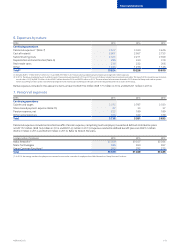Nokia 2015 Annual Report Download - page 135
Download and view the complete annual report
Please find page 135 of the 2015 Nokia annual report below. You can navigate through the pages in the report by either clicking on the pages listed below, or by using the keyword search tool below to find specific information within the annual report.
133
Financial statements
NOKIA IN 2015
Estimation and judgment are required in determining the fair value of
the acquisition, including the discount rate, the terminal growth rate,
the number of years on which to base the cash ow projections, and
the assumptions and estimates used to determine the cash inows
and outows. The discount rate reects current assessments of the
time value of money, relevant market risk premiums, and industry
comparisons. Risk premiums reect risks and uncertainties for which
the future cash ow estimates have not been adjusted. Terminal
values are based on the expected life of products and forecasted life
cycle, and forecasted cash ows over that period. The assumptions are
based on information available at the date of acquisition; actual results
may dier materially from the forecast as more information becomes
available. Refer to Note 4, Acquisitions.
Judgment is required in determining the date on which the Group
obtains control of the acquiree (acquisition date). On April 15, 2015,
the Group and Alcatel Lucent announced their intention to combine
through a Public Exchange Oer (the “Exchange Oer”) in France and
in the United States. As part of the Exchange Oer, all holders of
Alcatel Lucent ordinary shares, Alcatel Lucent American Depositary
Shares (“ADS”) and OCEANE convertible bonds (collectively, the
“Alcatel Lucent Equity Securities”) could exchange their Alcatel Lucent
Equity Securities for Nokia shares on the basis of 0.55 of a new
Nokiashare for every Alcatel Lucent share.
The initial Exchange Oer period closed in December 2015. On
January 7, 2016 the Exchange Oer was completed and shares were
exchanged, which created legal standing for the acquisition. Under
IFRS 3, however, the Group concluded that it was already the public
announcement of the interim results of the successful initial Exchange
Oer by the French stock market authority, Autorité des Marchés
Financiers (“AMF”) on January 4, 2016 that established a shared
understanding between the Group, Alcatel Lucent and Alcatel Lucent
shareholders that control of Alcatel Lucent had passed to the Group,
and therefore the results of operations will be consolidated from
January 4, 2016. Refer to Note 36, Subsequent events.
Revenue recognition
The Group enters into transactions involving multiple components
consisting of any combination of hardware, services and software
where the Group identies the separate components and estimates
their relative fair values, considering the economic substance of
theentire arrangement. The fair value of each component is
determined by taking into consideration factors such as the price
ofthe component when sold separately and the component cost
plusa reasonable margin when price references are not available.
Thedetermination of the fair value and allocation thereof to each
separately identiable component requires the use of estimates
andjudgment which may have a signicant impact on the timing
andamount of revenue recognized.
Net sales includes revenue from all licensing negotiations, litigations
and arbitrations to the extent that the criteria for revenue recognition
have been met. The nal outcome may dier from the current
estimate. Refer to Note 5, Revenue recognition.
Pension benet obligations and expenses
The determination of pension benet obligations and expenses for
dened benet pension plans is dependent on a number of estimates
and assumptions, including the discount rate, future mortality rate,
and annual rate of increase in future compensation levels. A portion of
plan assets is invested in debt and equity securities, which are subject
to market volatility. Changes in assumptions and actuarial estimates
may materially aect the pension benet obligation and future
expense. Based on these estimates and assumptions, pension benet
obligations amount to EUR 1 840 million (EUR 1 884 million in 2014)
and the fair value of plan assets amounts to EUR 1 451 million
(EUR1387 million in 2014). Refer to Note 8, Pensions.
Income taxes
The Group is subject to income taxes in both Finland and a number
ofother jurisdictions. Judgment is required in determining current
taxexpense, uncertain tax positions, deferred tax assets and deferred
tax liabilities; and the extent to which deferred tax assets can be
recognized. Estimates related to the recoverability of deferred
taxassets are based on forecasted future taxable incomeand tax
planning strategies. Based on these estimates and assumptions,
taxlosses carry forward, temporary dierences and taxcredits for
which no deferred tax assets are recognized due to uncertainty are
EUR 1 412 million (EUR 2 550 million in 2014).
The utilization of deferred tax assets is dependent on future taxable
prot in excess of the prot arising from the reversal of existing
taxable temporary dierences. The recognition of deferred tax assets
is based on the assessment of whether it is more likely than not that
sucient taxable prot will be available in the future to utilize the
reversal of deductible temporary dierences, unused tax losses and
unused tax credits before the unused tax losses and unused tax
credits expire. Recognition of deferred tax assets involves judgment
regarding the future nancial performance of the particular legal
entity or tax group that has recognized the deferred tax asset.
Liabilities for uncertain tax positions are recorded based on estimates
and assumptions of the amount and likelihood of outow of economic
resources when it is more likely than not that certain positions will be
challenged and may not be fully sustained upon review by local tax
authorities. Currently, the Group has ongoing tax investigations in
multiple jurisdictions, including India. Due to the inherently uncertain
nature of tax investigations, the ultimate outcome or actual cost of
settlement may vary materially from estimates. Refer to Note 13,
Income tax, and Note 14, Deferred taxes.
Carrying value of cash-generating units (“CGUs”)
The recoverable amounts of the Group’s CGUs are determined using
the fair value less costs of disposal method. Estimation and judgment
are required in determining the components of the recoverable
amount calculation, including the discount rate, the terminal growth
rate, estimated revenue growth rates, prot margins, costs of disposal
and the cost level of operational and capital investment. The discount
rate reects current assessments of the time value of money, relevant
market risk premiums, and industry comparisons. Risk premiums
reect risks and uncertainties for which the future cash ow estimates
have not been adjusted. Terminal values are based on the expected
life of products and forecasted life cycle, and forecasted cash ows
over that period. Based onthese estimates and assumptions, goodwill
amounts to EUR 237 million (EUR 2 563 million in 2014). Refer to
Note10, Impairment.
Allowances for doubtful accounts
Allowances for doubtful accounts are recognized for estimated losses
resulting from customers’ inability to meet payment obligations.
Estimation and judgment are required in determining the value of
allowances for doubtful accounts at each statement of nancial
position date. Management specically analyzes account receivables
and historical bad debt; customer concentrations; customer
creditworthiness; past due balances; current economic trends; and
changes in customer payment terms when determining allowances
fordoubtful accounts. Additional allowances may be required in future
periods if nancial positions of customers deteriorate, reducing their
ability to meet payment obligations. Based on these estimates and
assumptions, allowances for doubtful accounts are EUR 62 million
(EUR103 million in 2014), representing 2% of accounts receivable
(3%in 2014). Refer to Note 22, Allowances for doubtful accounts.


